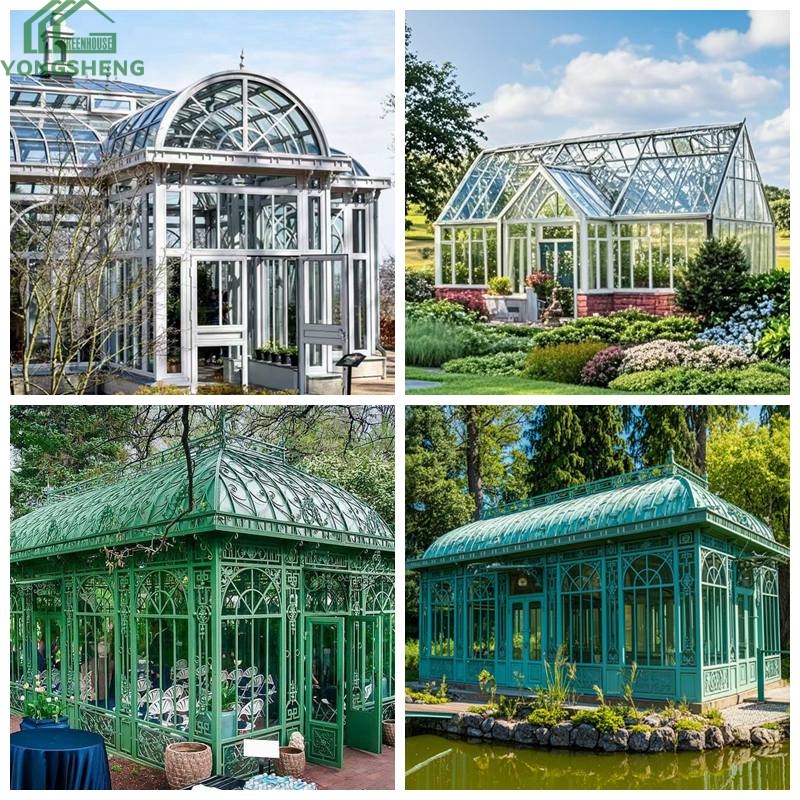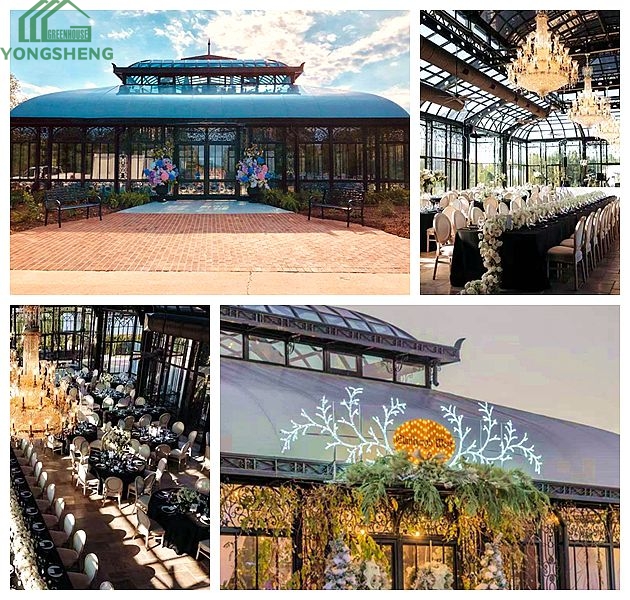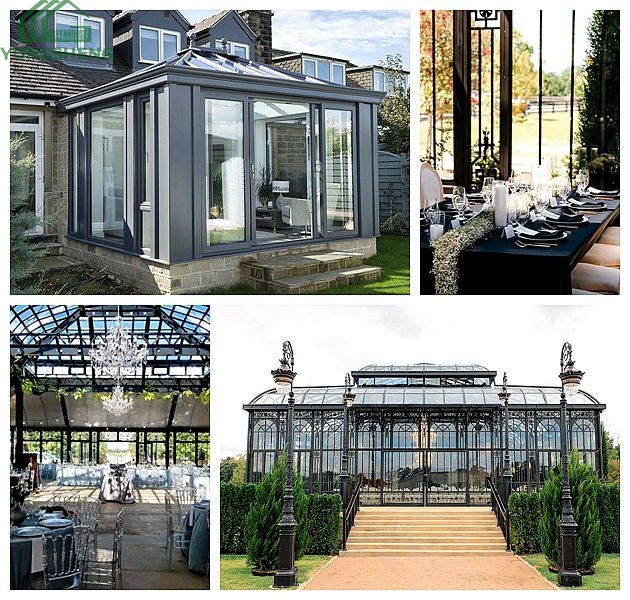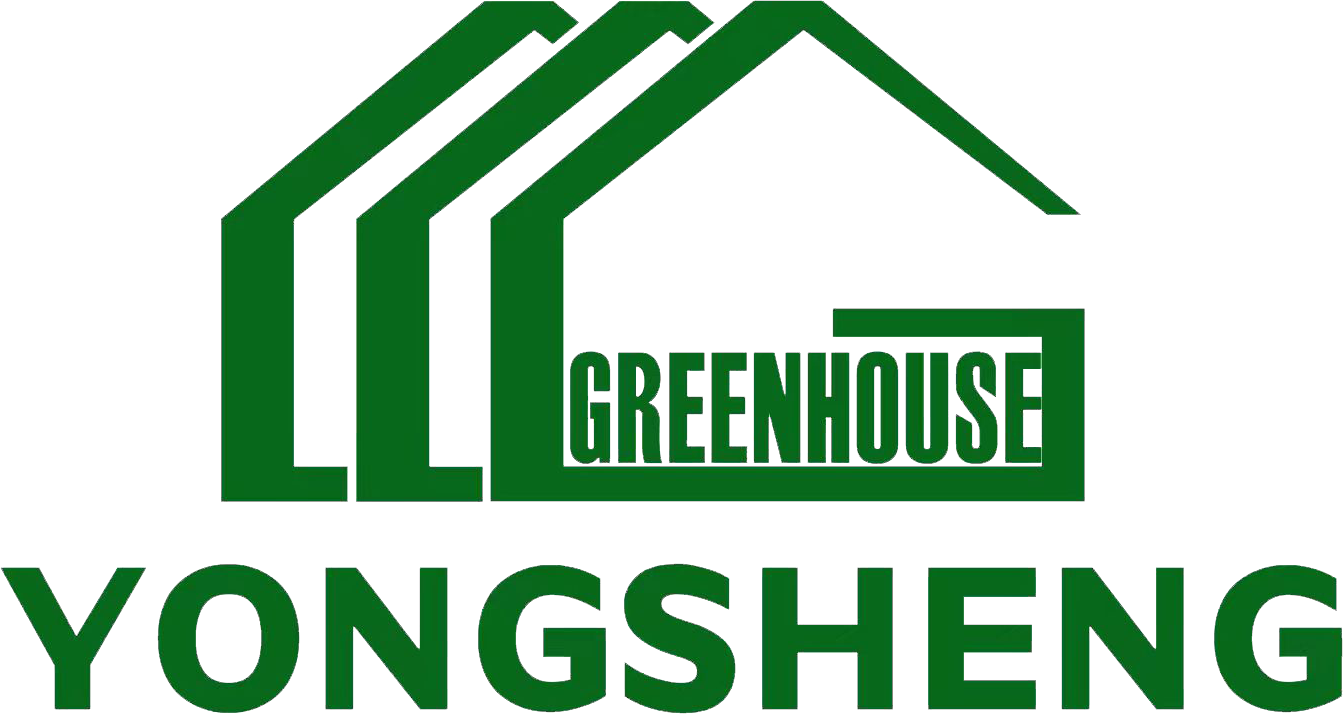The Sunroom Revolution: Exploring the Global Trend of Indoor-Outdoor Living
In an era marked by urbanization, environmental consciousness, and a renewed appreciation for nature, sunrooms have emerged as a transformative architectural trend. From
Victorian greenhouses steeped in historical charm to
glass greenhouses redefining modern living and
wedding greenhouses becoming the ultimate romantic venues, these light-filled spaces are capturing hearts and reshaping lifestyles worldwide. This deep dive into the sunroom market reveals why this trend is booming—and how it’s evolving to meet contemporary needs.
The
Victorian greenhouse revival is a testament to the enduring appeal of elegance and craftsmanship. Originally pioneered in the 19th century to house exotic plants and entertain guests, these structures are now celebrated for their ornate ironwork, curved glass domes, and symmetrical designs. Modern homeowners are embracing them not just as botanical showcases but as versatile extensions of their homes.
- Historical Roots, Modern Adaptations:
Victorian greenhouses were a symbol of wealth and botanical exploration during the British Empire’s peak. Today, they’re reimagined as luxury sunrooms, blending heritage aesthetics with modern comforts. For example, a 2024 renovation in London’s Kensington transformed a derelict Victorian greenhouse into a year-round conservatory with underfloor heating and smart glass technology.
- Market Momentum:
According to Houzz, searches for “Victorian sunroom ideas” increased by 65% in 2024, driven by buyers seeking to add architectural grandeur to their properties. Developers in Europe and North America are even incorporating scaled-down Victorian-inspired greenhouses into new luxury housing projects.
- Functionality Meets Aesthetics:
These spaces are no longer confined to plant cultivation. They now serve as home offices, yoga studios, or winter gardens, with retractable roofs and climate control systems ensuring usability in all seasons.
The rise of
wedding greenhouses reflects a global shift toward intimate, eco-conscious celebrations. These venues offer a magical blend of natural beauty, versatility, and sustainability, making them a top choice for couples and event planners.
- Why Greenhouses Are the New Wedding Hotspots:
- Year-Round Magic: Unlike outdoor venues, greenhouses provide shelter without sacrificing the charm of fresh flowers, sunlight, and greenery. A December wedding in a heated greenhouse in New York City can feature poinsettias and twinkling lights, while a July ceremony in Sydney might showcase tropical blooms.
- Sustainability Credentials: Eco-conscious couples are drawn to venues that reduce their carbon footprint. Many greenhouse wedding venues partner with local florists, use solar-powered lighting, and even grow their own flowers on-site.
- Social Media Impact: Instagram-worthy backdrops, such as glass ceilings framed by ivy or hanging floral installations, have fueled demand. WeddingWire reports that greenhouse weddings generate 30% more social media engagement than traditional events.
- Industry Growth:
The global wedding greenhouse market is projected to reach $1.2 billion by 2030, with Asia-Pacific leading adoption due to rising disposable incomes and cultural emphasis on unique celebrations.
Glass greenhouses represent the cutting edge of sunroom design, merging minimalist aesthetics with advanced technology. These structures prioritize transparency, sustainability, and seamless integration with the surrounding environment.
- Design Innovations:
- Smart Glass Technology: Electrochromic glass adjusts tint based on sunlight, eliminating the need for blinds and optimizing energy efficiency.
- Biophilic Design: Features like living walls, waterfalls, and native plant species create immersive indoor ecosystems, boosting occupant well-being.
- Modular Structures: Companies like Rion and Sky Garden offer customizable glass rooms that can be expanded or reconfigured as needs change.
- Market Drivers:
- Urbanization: In cities like Tokyo and Mumbai, glass greenhouses provide residents with a slice of nature in high-density areas.
- Work-from-Home Culture: Professionals are investing in glass-enclosed home offices that enhance productivity through natural light and views.
- Energy Efficiency: Low-E glass and passive solar design reduce heating/cooling costs, aligning with sustainability goals.
- Health Benefits:
Studies show that spending time in glass-enclosed spaces increases vitamin D levels, reduces stress, and improves focus—key factors in their popularity.
- The Wellness Movement:
Post-pandemic, consumers prioritize mental health, and sunrooms offer a sanctuary for relaxation and connection to nature.
- Sustainability Imperative:
Sunrooms with renewable materials and energy-efficient systems appeal to eco-minded buyers.
- Real Estate Value:
According to the National Association of Realtors, homes with sunrooms sell 15% faster and at a 10% premium compared to similar properties.
- Technological Advancements:
Innovations like self-cleaning glass, AI-powered climate control, and modular designs make sunrooms more accessible and cost-effective.
- Residential: A glass greenhouse in Stockholm uses geothermal heating to maintain a tropical climate year-round, doubling as a family lounge and plant nursery.
- Commercial: The Glasshouse in Singapore, a 10-story greenhouse complex, combines retail, dining, and urban farming, showcasing the future of sustainable architecture.
- Weddings: The Botanical Conservatory in Chicago hosts 200+ weddings annually, with couples citing its “magical blend of romance and innovation.”
While sunrooms offer numerous benefits, challenges like high initial costs and maintenance requirements persist. However, solutions are emerging:
- Cost-Effective Alternatives: Prefabricated kits and DIY modular systems reduce installation expenses.
- Low-Maintenance Materials: Self-cleaning glass and composite frames minimize upkeep.
- Government Incentives: Tax rebates for energy-efficient home improvements are encouraging adoption in regions like the EU and Canada.
The sunroom market is poised for exponential growth, with projections estimating a 7.8% CAGR from 2025 to 2030. Key trends include:
- Hybrid Spaces: Sunrooms integrated with pools, spas, or outdoor kitchens.
- AI Integration: Smart sensors optimizing light, temperature, and irrigation.
- Cultural Fusion: Blending traditional greenhouse styles with local architectural elements (e.g., Moroccan-inspired glass rooms in Marrakech).
The sunroom trend is more than a design fad—it’s a reflection of humanity’s enduring connection to nature. Whether through the timeless elegance of a Victorian greenhouse, the eco-chic allure of a wedding greenhouse, or the high-tech sophistication of a modern glass structure, these spaces offer a bridge between indoor comfort and outdoor beauty. As urbanization accelerates and sustainability becomes non-negotiable, sunrooms are not just an investment in property but in quality of life.
Ready to transform your space? Share your sunroom inspiration below!
Why Choose US?
-
● As the first manufacturer in China to introduce the Victorian conservatory design from Europe, we have 36 years of production experience since 1988, and our products are distributed in 68 countries.
-
● We have a professional team of 8 conservatory design engineers and 60 production workers. We are equipped with 2 hot-dip galvanizing machines, 2 steel shot blasting machines, and 1 spray line.
-
● Our professional design team can provide theoretical calculation data support for wind pressure resistance, earthquake resistance, and snow resistance of large-scale steel structure conservatories.
-
● Strict quality control. 8 inspection stages: raw material inspection, cutting and blanking size inspection, welding quality inspection, hot-dip galvanizing quality inspection, spray quality inspection, assembly quality inspection, and packaging quality inspection. Ensuring smooth assembly of the products, no rust, no leakage, and compliance with customer national standards.
-
● We cooperate with many well-known architectural design companies worldwide.
-
● Customized services. We can customize according to customer designs and dimensions. We also provide supporting facilities such as electric sunshades and air conditioners.
-
● We offer installation dispatch services, inspection services, and free replacement of parts. We also present high-value exquisite gifts.
-
● Video factory tour. You can view the entire production process.






